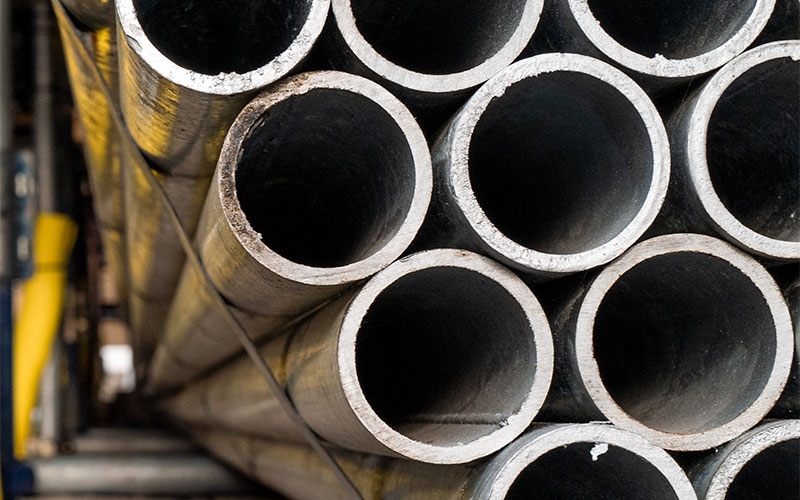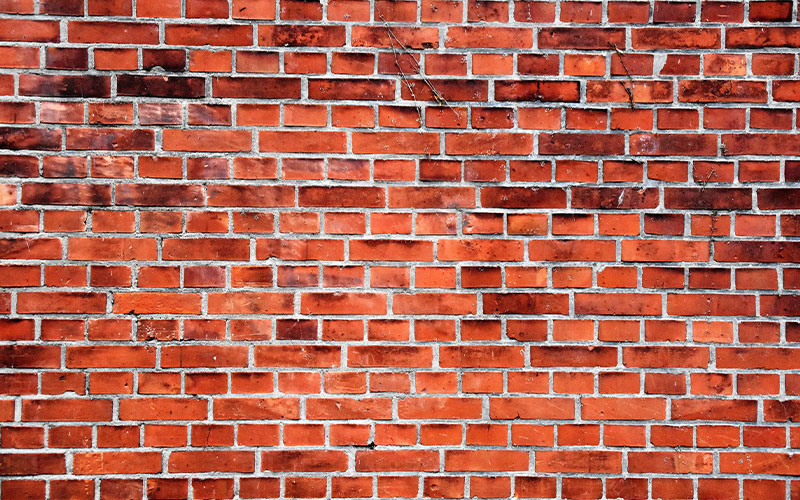The construction industry uses a variety of building materials for different aspects of a home build. Architects consult with structural engineers on the load-bearing capabilities of the materials with which they design, and the most common materials are concrete, steel, wood, masonry, and stone. Each has different strength, weight, and durability, which makes it right for various uses. There are national standards and testing methods that govern the use of building materials in the construction industry, so that they can be relied on for providing structural integrity. Architects also choose materials based on cost and aesthetics.
Building materials are usually categorized into two sources: natural and manmade. Materials such as stone and wood are natural, and concrete, masonry, and steel are manmade. But both must be prepared or treated before they’re used in building. Here is a list of building materials that are commonly used in construction.
1. STEEL
Steel is a metal alloy of iron and carbon and often other alloying material in its composition to make it stronger and more fracture-resistant than iron. Stainless steels resist corrosion and oxidation because of the additional chromium in their make-up. Because it is so strong compared to its weight and size, structural engineers use it for the structural framework of tall modern buildings and large industrial facilities. Some of its qualities include:
- Steel has high strength-to-weight and strength-to-size ratios.
- It’s high-cost relative to other metals. Structural engineers can consult on choosing the most cost-effective sizes to use in a house to support the actual load on the building.
- Steel is less time-consuming to install than concrete.
- It can be installed in any environment.
- Steel can be susceptible to corrosion if improperly installed or maintained
Chrome, gold, and silver are generally used for finishes or decoration because they lack the tensile strength of steel.
 2. CONCRETE
2. CONCRETE
Concrete is a composite material made of fine and coarse aggregate (think gravel, crushed stone, recycled concrete, and geosynthetic aggregates) bound together by a liquid binder such as cement that hardens or cures over time. Portland cement is the most common type of cement, and is a fine powder, produced by heating limestone and clay materials in a kiln and adding gypsum. So Portland cement concrete consists of the mineral aggregate, bound with Portland cement and water. After mixing, the cement hardens or cures into the stone-like material we think of as concrete.
Concrete attributes:
- Strength varies depending on the mix. Suppliers to the concrete industry usually provide the materials used for their concrete and test the concrete mix for its strength.
- Concrete can be poured into a form to take virtually any shape and harden into a material similar to stone.
- It takes at least seven days to cure, so engineers and architects must factor in that hardening time when they devise building schedules for concrete construction.
- Its versatility, cost, and strength make it the ideal material for a house foundation. Since it can carry a heavy load and withstand the forces from the surrounding environment, a concrete home foundation is common.
- To increase the tensile strength of concrete, engineers often plan for it to be reinforced with steel rods or bars (rebar).
 3. WOOD
3. WOOD
Among the oldest, or perhaps the oldest, of building materials, wood has been used for thousands of years and has properties that make it an ideal building material—even in the days of engineered and synthetic materials.
For construction use, wood pieces are machine-planed and cut into standard dimensions, such as 2”x4” (1.5”x3.5” actual) and 2”x6,” (1.5”x5.5” actual) so that their measurements can be accurately factored into building plans—this is known as dimensional lumber. Wood in larger sizes is usually referred to as timber or beams and is often used to construct the frames of large structures like bridges and multi-story buildings.
Some tree species are better for some uses and for use in some climates than others. Structural engineers and architects can determine which type of wood is ideal for a construction project.
- It is readily available and an economical natural resource.
- Wood is relatively lightweight and easy to standardize in size.
- It provides good insulation, which is why many architects and engineers like using it for homes and residential buildings.
- Wood has high tensile strength—keeping its strength while bending—and is very strong when being compressed vertically.
- Because it is lightweight and needs to be pressure treated to come into contact with surrounding soil, wood is a less popular choice for foundations or basement walls. (However, permanent wood foundations, known as PWFs, are gaining traction among builders thanks to the warm and inviting wood basement living space they offer.) More often, wood-framed homes usually have a reinforced concrete or pier and beam foundations.
 4. STONE
4. STONE
The longest lasting building material available is the one that’s been here for thousands of years: stone. In fact, the most ancient of buildings still in existence in the world are made of stone. It has many advantages, though engineers and architects must make some special considerations when planning a building using stone.
- Dry stone walls made of dense rock have been used for thousands of years. Different forms of mortar were later used to hold them together.
- Because it is so dense, stone can be difficult to work with because of its weight and the difficulty in moving it.
- Stone is not an efficient insulator, since it is difficult to keep warm.
- Various stone types are best for different uses. For instance, slate is fire-resistant. Granite is one of the hardest stones and one of the most durable products available; the Incas used limestone or granite to build their incredibly strong buildings.
 5. BRICK/MASONRY
5. BRICK/MASONRY
Masonry construction uses individual units (such as bricks) to build structures that are usually bound together by some kind of mortar. Historically, clay bricks were formed in a mold and kiln-fired. The strongest and most commonly used masonry unit now is a concrete block, which may be reinforced with steel. Glass, brick, and stone can all be used in a masonry structure.
- Masonry is durable and fire-resistant.
- This method of construction is able to resist compression loads, which makes it a good material for load-bearing walls.
- Reinforced with concrete, or in combination with reinforced concrete, masonry can support multi-story buildings, and can be an economical choice.
- While it is a strong method to use in many types of construction, lasting masonry installation can depend on the quality of mortar and workmanship.






 Indonesia
Indonesia